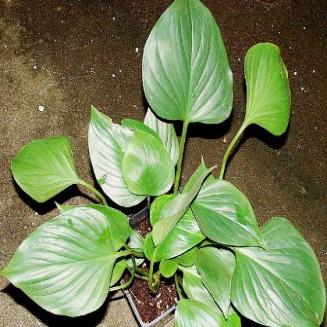
Code: HOS
|
:
|
Description: Perennial herb. Rhizome long, tubular, with hard fibres. Leaves large, sagittate-cordate with tightly clasping sheath. Inflorescence in axillary spadix; the male flowers above, the female below; perianth absent in both sexes. Berry red when ripe. All parts of the plant, especially the rhizome, are aromatic.
Flowering period: April - June.
Distribution: Grows wild along stream banks and on the sides of rocky ravines in mountainous regions.
Parts used: The root-stocks, collected in autumn and winter, are well washed and then dried in the sun or in ovens. The fresh leaves are also used.
Chemical composition: The rhizome contains an essential oil consisting of linalol, a-terpineol, linalyl acetate, sabinene, limonene, propionic aldehyde and acetic acid.
Therapeutic uses: The rhizome possesses anti-inflammatory, anodyne and stomachic properties. It is used in treating rheumatism, arthralgia, paresis, gastralgia, dysmenorrhoea, osteodynia of the aged and dyspepsia. It is administered in a dose of 6 to 12 g per day in the form of a decoction, elixir or extract. Massage with a fresh rhizome maceration has an anodyne effect. A poultice of pounded fresh leaves is active on boils. The rhizome is also an insecticide against moth.
 Schott '.jpg)